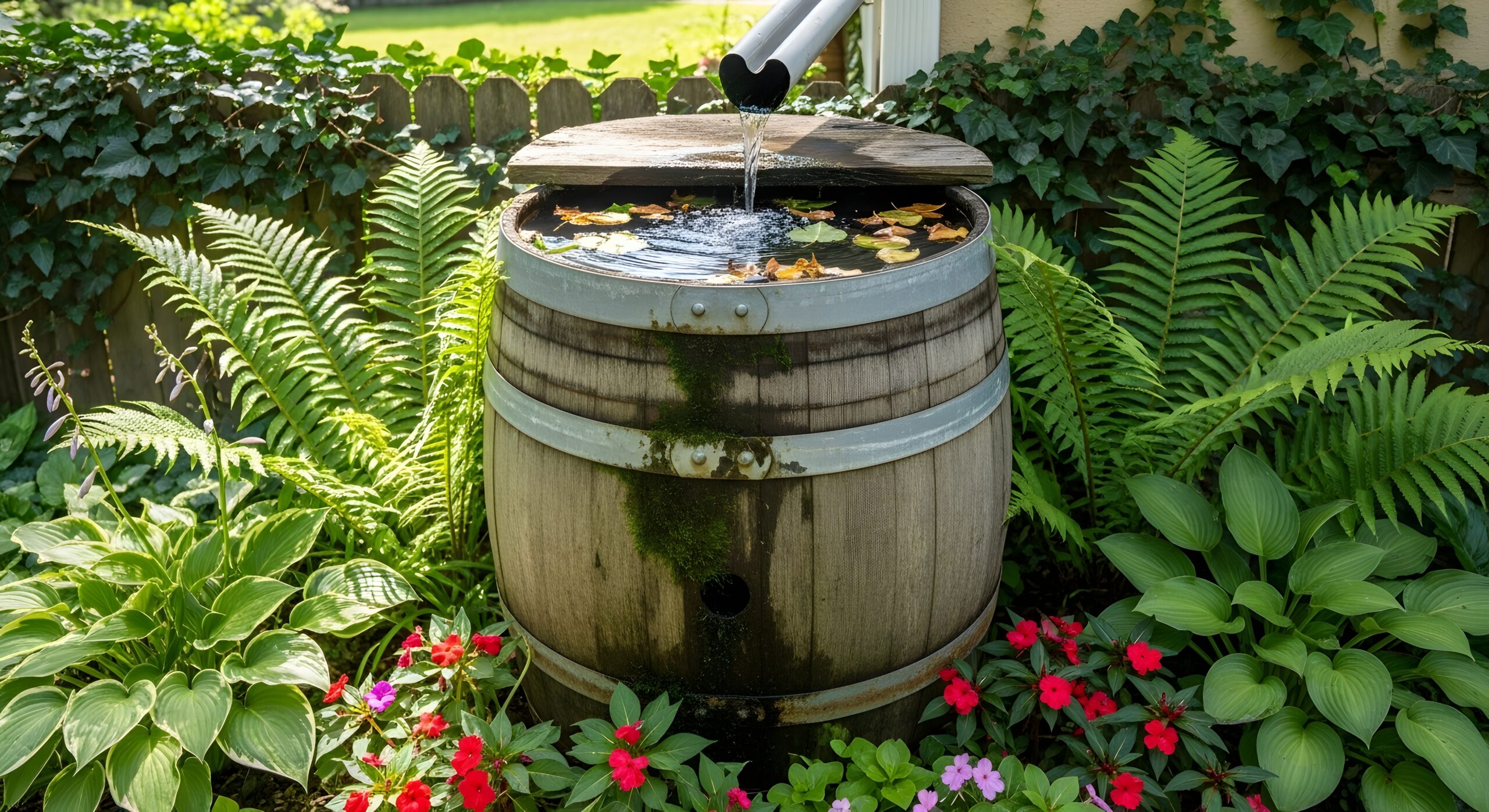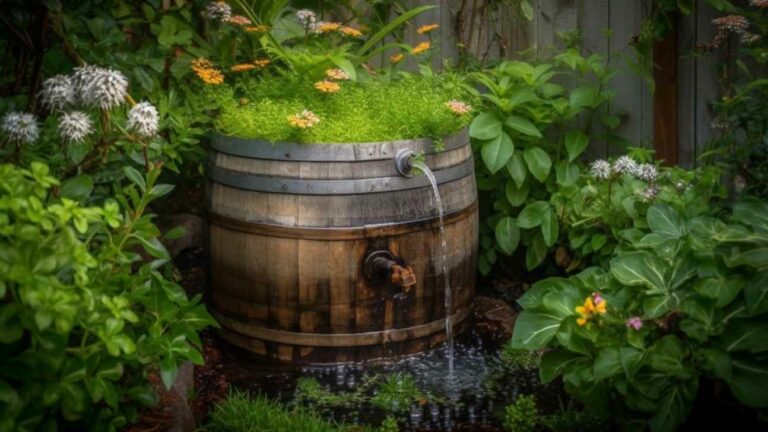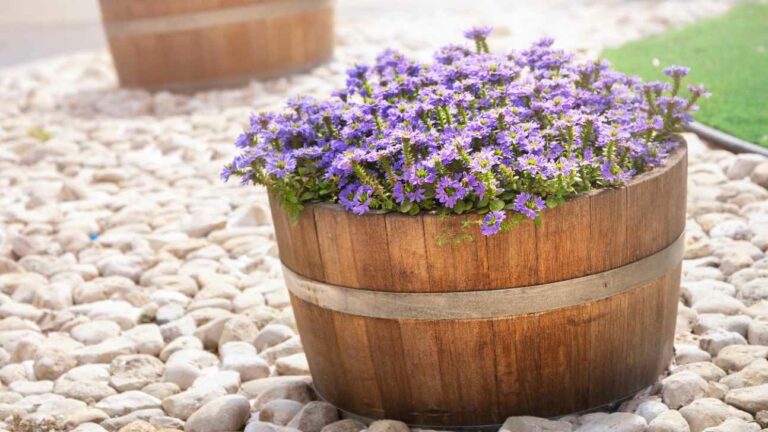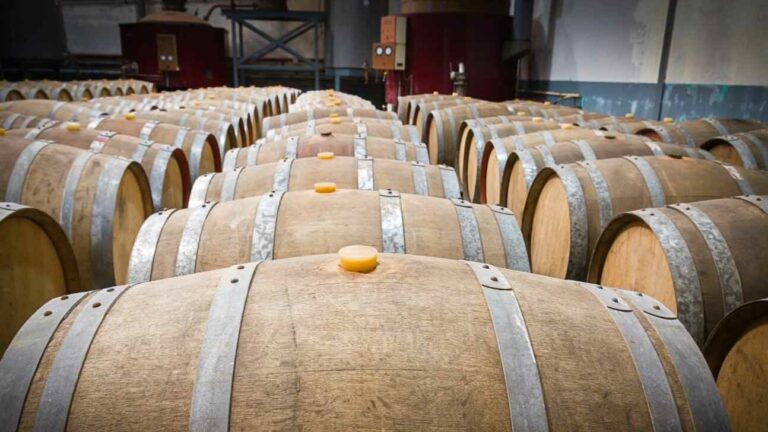So you wanna turn that old whiskey barrel into a rain barrel, huh? Can’t say I blame you. Those barrels are sturdy, stylish, and perfect for collecting and storing rainwater. Plus, repurposing materials is good for the planet. You’ve come to the right place. In this article, I’ll walk you through how to turn that barrel into a functioning rain barrel in a few easy steps. By the end, you’ll be collecting free, clean water for your garden and feeling good about keeping another item out of the landfill. The process is straightforward, the materials are inexpensive, and the end result is a rustic rain barrel you can proudly display. Let’s get started!
What Is a Rain Barrel?
A rain barrel is a container used to collect and store rainwater runoff from your roof. Usually made from a repurposed barrel or bucket, it sits under a downspout to gather water for reuse on your lawn or garden.
Using a rain barrel has some benefits:
- It reduces your water bill by supplying free water for outdoor use.
- It decreases pollution in local waterways since less stormwater runoff flows into them.
- The collected rainwater is better for your plants and soil compared to treated tap water.
To turn a whiskey barrel into a rain barrel, you’ll need a few supplies:
- A wooden whiskey or wine barrel
- A spigot or spout for easy access to the water
- Sealant or caulk to patch any holes or cracks
- A lid with an opening for your downspout
- Mesh or wire to cover the opening to prevent debris and insects
Place your barrel on a sturdy base, seal any leaks, and attach the spigot near the bottom. Connect your downspout to the lid opening and you’ll be collecting rain in no time. Now you can feel good about saving money and helping the environment, one watering can at a time!
Why Use Whiskey Barrels for Rainwater Collection?
Whiskey barrels aren’t just for aging spirits anymore. Repurposing them as rain barrels is a great way to put these sturdy containers to use in an eco-friendly way.
Durability
Whiskey barrels are built to last, constructed of thick staves of oak that have been seasoned for years. They can withstand temperature changes, weather exposure, and the test of time. As rain barrels, they’ll provide years of reliable service collecting and storing rainwater.
Size
Most whiskey barrels hold around 50 gallons of liquid, the perfect size for a rain barrel. That amount of collected rainwater can handle many gardening and landscaping needs. And if you link multiple barrels together, you’ll have enough for larger scale use.
Esthetics
There’s no denying the rustic, charming appeal of whiskey barrels. As rain barrels, they make an attractive addition to any yard or garden. Their distinctive shape and wood grain add visual interest that you just don’t get with a typical plastic barrel.
Whiskey barrel rain barrels: durable, sized right, and stylish. What’s not to love? With minimal effort, you can turn an empty barrel into a functional garden fixture that will serve you well for years to come. Now that’s what we call recycling at its finest!
Sourcing Used Whiskey Barrels
Sourcing used whiskey barrels may seem tricky, but there are a few great options to find barrels in good condition.
You can contact local distilleries and see if they have any used barrels they’re willing to sell. Many distilleries replace barrels every few years as the wood loses its ability to impart flavor to the whiskey. They may be happy to sell you their “retired” barrels at a good price.
Another option is to check websites like Craigslist, Facebook Marketplace or eBay. Individuals and businesses often sell used whiskey barrels they no longer need. Look for sellers within a reasonable driving distance so you can inspect the barrels in person before purchasing. Make sure the barrels are still watertight by filling them with a bit of water.
Cooperages
Some cooperages, companies that make and repair barrels, also deal in used barrels. Call or check online to see if any cooperages in your area sell used whiskey barrels. They ensure the barrels remain in good, watertight condition before reselling them, so you’re more likely to get a barrel that will last for many years.
With some searching, you can find high-quality used whiskey barrels to repurpose as rain barrels. Just make sure any barrel you choose is still completely intact and watertight before buying – you want it to hold water for a long time to come!
Preparing the Barrel for Rainwater Collection
To prepare your whiskey barrel for collecting rainwater, you’ll first need to thoroughly clean and sanitize it. Scrub the inside with hot, soapy water to remove any residue. Rinse well with a hose to flush out any remaining debris.
Next, you’ll want to seal the barrel. Apply a sealant, like linseed or tung oil, to the inside of the barrel. Coat the entire surface, including the rim and any cracks in the wood. Let it dry as directed. This will help prevent leaks and water damage.
Finally, consider adding a spigot or spout near the bottom of the barrel for easy access to your rainwater. You can also add an overflow outlet a few inches from the top so excess water has a place to go. Secure them in place with plumber’s putty and seal them well with more sealant.
Once your whiskey barrel is prepped, you’re ready to start collecting rainwater. Place the barrel on a raised platform, like concrete blocks, to allow proper drainage and access to the spigot. Position it so the opening is slightly tilted to one side, which will make it easier to collect water from your downspouts. Your barrel will fill up quickly with each rain!
Setting Up Your Rain Barrel
Now that you have your whiskey barrel ready, it’s time to set it up to collect rainwater. Place the barrel on a sturdy, level surface in an area near downspouts or gutters. For the best water pressure, elevate the barrel on blocks or a wooden platform.
Make sure the barrel opening and spigot are securely closed before placing it under a downspout. Attach a downspout diverter or downspout extension to direct the water into the barrel opening. The diverter allows you to switch between collecting water in the barrel or letting it flow down the downspout.
Once your barrel is in place, open the spigot at the bottom to allow air to escape as it fills for the first time. Don’t forget to close the spigot again when water starts flowing out. Your rain barrel is now set up and ready to collect rainwater for all your watering needs! The collected rainwater is great for watering lawns, gardens, houseplants, and more.
Connecting Your Rain Barrel to Gutters
To connect your whiskey barrel rain barrel to your home’s gutters, you’ll need a few parts.
Materials
- Flexible downspout extender or diverter
- Elbow joints (2)
- Rain barrel spigot kit
- Garden hose
First, you’ll want to disconnect your downspout from the elbow joint connecting it to your underground drain pipe. Attach the flexible downspout diverter in its place, directing the flow into your rain barrel.
Next, attach the two elbow joints to the downspout diverter and rain barrel opening to create a path for the water to flow from your gutters into the barrel. The joints should angle downward so water moves by gravity.
Install the spigot kit in the side of the barrel, a few inches up from the bottom. This allows you to attach a garden hose to the spigot and drain water from the lower portion of the barrel.
Finally, place your rain barrel on level ground, on blocks or a stand, next to where you detached the downspout. Make sure the diverter tubing reaches and seals properly to the barrel opening.
With the barrel now connected, rainwater will flow from your gutters into the barrel for collection. Keep in mind that once full, excess water will continue down your original downspout and drain pipe to avoid flooding. Check your local regulations regarding rainwater collection and usage before drinking or irrigating with the water.
Maintaining Your Whiskey Barrel Rain Barrel
To keep your whiskey barrel rain barrel in working order, perform regular maintenance.
Check the spigot and lid seals twice a year, in spring and fall. Replace them if you notice any cracks or damage to ensure a tight seal.
Inspect the barrel staves and metal bands for any leaks or weak spots. Patch small holes and cracks with waterproof wood glue, caulk, or roof cement. For larger damage, you may need to replace damaged staves.
Clean out debris from the barrel interior each season. Use a hose to flush out leaves, dirt and any other accumulated matter clogging the spigot or intake holes.
Repaint or re-stain the barrel exterior every 2-3 years to protect the wood. Apply 2-3 coats of exterior paint, sealant or wood stain and seal with a clear topcoat.
Consider installing an overflow outlet a few inches below the rim to prevent the barrel from overflowing in heavy rains. Attach an additional spigot or valve and connect it to a hose to divert excess water.
Replacement parts like spigots, valves, seals and wood staves can be found at most hardware stores. With regular maintenance and care, a whiskey barrel rain barrel can provide many years of useful service collecting and storing rainwater for your garden.
Tips for Using Rain Barrel Water
Once you have your whiskey barrel rain barrel set up and collecting water, here are some tips for using the rainwater:
Filter the Water
The water directly from the rain barrel may contain debris like leaves, twigs, and bird droppings. Run the water through a filter to remove any large particles before using it. You can purchase rain barrel filters that attach right to your spigot for an easy solution.
Use Within a Week
Rainwater collected in barrels should be used within 5 to 7 days to prevent the growth of bacteria like Legionella or other contaminants. Don’t store the water for long periods.
For Plants Only
Only use the rain barrel water for watering plants, gardens and lawns. Do not drink the water or use for cleaning. The water can contain bacteria, parasites and other microbes that may make you sick if consumed or exposed to the skin.
Consider a Pump
If you have trouble accessing the spigot at the bottom of a tall rain barrel, install an electric pump to help move the water. Look for a pump designed specifically for rain barrels that can handle debris without clogging. The pump will make it much easier to fill watering cans and distribute the water to your greenery.
Winterize the Barrel
At the end of the rainy season or if temperatures drop below freezing, empty and disconnect your rain barrel to prevent damage over winter. Store the barrel upside down and disconnected from the downspout until the next season. Re-connect in spring once temperatures have risen and rainfall returns.
Following these tips will help you get the most out of your DIY rain barrel water harvesting system and keep your yard and garden green all season long. Happy watering!
FAQ – Answering Common Questions About Whiskey Barrel Rain Barrels
Do whiskey barrels hold water? Yes, oak whiskey barrels are ideal for holding and storing water. The barrels are designed to be watertight and the oak wood is naturally resistant to rot and decay. As long as the barrel is properly sealed, it will safely contain water for a long time.
Will the water taste like whiskey? The water may pick up subtle hints of the whiskey aroma and flavor as it sits in the barrel, but it will be very faint. The main purpose of aging whiskey is to impart flavor to the spirit. Aging water in a used whiskey barrel will not turn it into whiskey or make it unsafe to drink. The water may develop a slightly woody, vanilla-like taste but will still be fresh and potable.
How long can I age water in a whiskey barrel? You can age water in a whiskey barrel for several months up to a couple of years. The longer it sits, the more it may pick up flavor notes from the wood. However, aging for too long, 6-12 months or more, may result in the growth of molds and other microbes that can spoil the water. It is best to age the water for 1 to 3 months, then drink or replace it.
Will a whiskey barrel rain barrel attract pests? As with any outdoor container holding standing water, whiskey barrel rain barrels can potentially attract mosquitoes and other pests if not properly sealed and maintained. The barrel should have an airtight lid or spigot to prevent insects from accessing the water. The barrel should also be regularly inspected to ensure there are no cracks or holes where pests can enter. Properly sealed and maintained, a whiskey barrel rain barrel poses no greater risk of attracting pests than any other rain barrel.
Final Thoughts
So there you have it, a simple DIY project to reuse an old whiskey barrel and turn it into a functional rain barrel. Now when the rain comes down, you’ll be ready to collect every drop to use in your garden or yard. And the best part is, you’ve given new life to an item that would have otherwise gone to waste. Not only are you helping the environment, but you’ve got a great conversation piece that shows off your handy skills. The next time someone compliments your rain barrel, you can proudly say you made it yourself from an old whiskey barrel. How cool is that!







